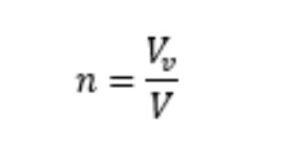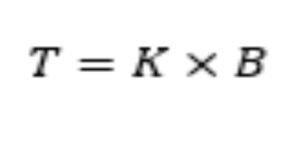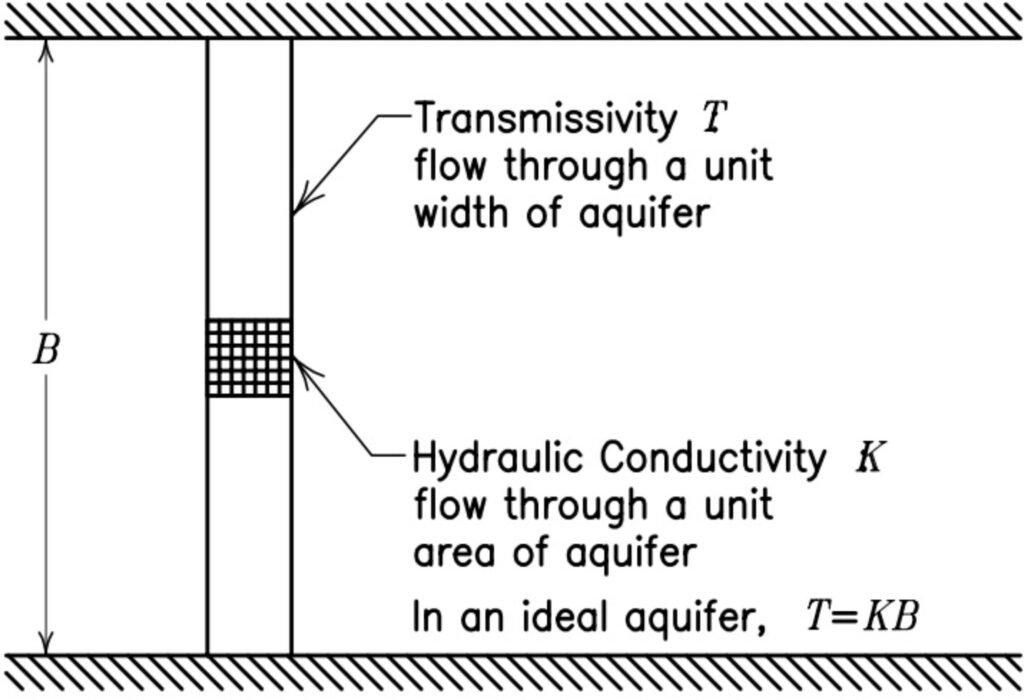
"If you can't explain it simply, you don't understand it well enough" (Albert Einstein)

geo
"If you can't explain it simply, you don't understand it well enough" (Albert Einstein)
What is an aquifer?
Since ancient times, mankind has exploited aquifers to meet its water needs. Nowadays, specialists in Soil Mechanics, Hydrology and Hydrogeology study aquifers to make their exploitation sustainable. But what is an aquifer? What are its main properties? Read on to find out.
Contents
Definition of aquifer
From the etymological point of view, the word aquifer comes from the Latin aqua (water), and the suffix fera (carrying), so its meaning that it carries or contains water (Kapelusz Dictionary of the Spanish Language, 1979). In the scientific field, the term was adopted by the Earth Sciences to describe geological formations that contain subway water, and that allow its movement through them (De Sola, 1967).
From this definition, several types of aquifers emerge, which are shown in Figure 1.

Figure 1 The hydrological cycle and the aquifers (Source: Powers et al, 2007).
Confined aquifers are permeable zones located between two aquicludes (layers consisting of clays, silts, or other low-permeability materials), which are recharged by water entering from the surface, moving through the ground, and eventually trapped between impermeable layers. In these aquifers, water can be found at different pressure levels, always above atmospheric pressure.
Free aquifers, on the other hand, are limited by the water table in their upper part, and are directly recharged by the flow of water in the ground above that level. A special case of a free aquifer is the perched aquifer, which is nothing more than a small aquifer contained in an aeration zone of a main free aquifer and separated from it by a small aquiclude
To better understand the physics of aquifers, it is important to mention, taking into account the hydrological cycle shown in Figure 1, that groundwater is in slow (but constant) movement within aquifers and between aquifers. It should also be noted that there is a continuous recharge of water by infiltration from the surface and from lakes and groundwater flows; and, at the same time, a continuous subtraction of groundwater by seepage into effluents and by pumping from deep wells.
Porosity (n)
Porosity is one of the main properties of an aquifer, and is defined as the ratio between the volume of interstitial space contained in the solid structure of a material (Vv), and its total volume (V). It is given by the following expression:

This property depends on the shape, gradation and size of the solid particles that constitute a sediment, and on the shape and distribution of the cracks, fissures, and discontinuities of a rock mass (De Sola, 1967). Figure 2 illustrates schematically the relationship between the arrangement of its constituents and the porosity of a soil.

Figure 2 Relationship between porosity and texture: (a) sedimentary deposit with high porosity; (b) sedimentary deposit with low porosity; (c) pebble deposits with high porosity; (d) sedimentary deposit with low porosity, with material in the interstices; (e) rock with porosity due to dissolution; (f) rock with porosity due to fracturing. (Source: Meinzer, 1923).
In general, porosity in rocks can be determined with sufficient accuracy, because it is relatively easy to obtain samples that are not deformed during extraction. However, in the case of young sediments, the determination of porosity is carried out indirectly, knowing the field density and specific gravity of the solid particles that constitute them.
Why is porosity an important property for aquifers? Well, because water moves between the empty spaces that exist between soil grains, or between cracks and discontinuities in a rock mass. Therefore, if porosity is low (either because of the arrangement and nature of the soil grains, or because the discontinuities of a rock mass are not interconnected), aquifer production will be low. And vice versa.
Transmissivity (T)
Transmissivity (T) is another fundamental property, and is defined as the ease with which water moves through a unit width section of an aquifer (Powers et al, 2007). It is a fundamental property for determining the amount of water that can be pumped in a groundwater development project, and is determined by the following expression:

Where K is the permeability coefficient, and B is the width of the aquifer section, considered equal to 1 m. For projects related to water supply or aquifer contamination analysis, transmissivity is typically expressed considering permeability in meters per day (m/day).
What is the difference between transmissivity (T) and permeability (K)? Figure 3 illustrates these differences.

Figure 3 Transmissivity and permeability (Source: Powers et al, 2007).
As can be seen from the figure above, although transmissivity and permeability are similar concepts, the main difference is that transmissivity considers a unit width section of the soil, while permeability takes into account a unit area section of the soil.
Therefore, although both relate to the possible flow of water through the ground, they refer to two different ways of considering it.
Storage coefficient (Cs)
The storage coefficient of an aquifer (Cs) is defined as the volume of water released for storage, per unit area and per unit change in load normal to that area (Ferris et al, 1962).
In free aquifers, Cs ≈ 0.2, because water drains by gravity from the interstitial pores. In confined aquifers, on the other hand, the pores remain saturated, but there is a low volume available for storage when the load is reduced, due to the elasticity of the aquifer. Typical Cs values for confined aquifers vary between 0.0005 and 0.001. For rock mass aquifers, Cs can be several orders of magnitude lower than the above values, due to the low effectiveness of porosity and the rigid structure of this type of aquifer.
Now that we have a better understanding of what an aquifer is, we will be able to approach its study from a different perspective, fundamentally oriented towards making its exploitation sustainable over time. But this is a subject that we will deal with in a future post.
References
- “Diccionario Kapelusz de la Lengua Española” (1979). Editorial Kapelusz, S.A. Buenos Aires, Argentina.
- De Sola, O. (1967) “Hidrología y Propiedades de los Acuíferos”. Tema II de la obra Desarrollo de Aguas Subterráneas. Programa de Educación en Ingeniería Sanitaria de la Universidad Central de Venezuela. Caracas, Venezuela.
- Ferris, J.; Knowles, D.; Brown, R. & Stallman, R. (1962) “Theory of Acuifer Tests”. Geology Survey Water Supply. Paper 1536 E. USA.
- Powers, P.; Corwin, A.; Schmall, P. & Kaeck, W. (2007) “Construction Dewatering and Groundwater Control”. Third Edition. John Wiley & Sons, Inc. New Jersey, USA.